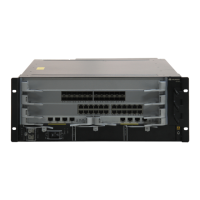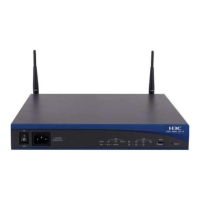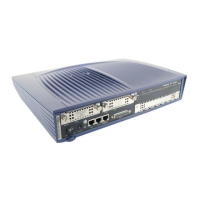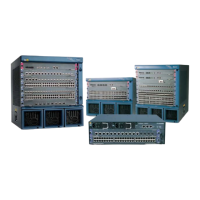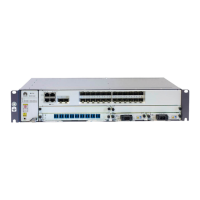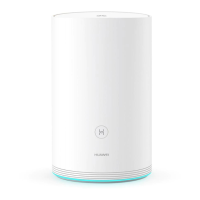
Do you have a question about the Huawei Quidway 3600 Series and is the answer not in the manual?
| Brand | Huawei |
|---|---|
| Model | Quidway 3600 Series |
| Category | Network Router |
| Language | English |
Identifies the intended audience for the installation manual.
Explains formatting for keyboard/mouse actions and document symbols.
Overview of Huawei's enterprise modular routers for network infrastructure.
Details on different router models within the R2600/3600 series and their capabilities.
Lists the various interface and function modules compatible with the routers.
Highlights key features like backup functions, remote office solutions, and interface density.
Describes the physical appearance and indicators of R2620 and R2621 models.
Details the appearance, panel indicators, and system specifications for R2630/R2630E.
Covers appearance, panel indicators, and system specs for R2631 and R2631E routers.
Provides information on the appearance, panel indicators, and system description for R3640/R3640E.
Details the appearance, panel indicators, and system specifications for R3680 and R3680E.
Essential safety guidelines and warnings for router installation and operation.
Environmental requirements for temperature, humidity, and cleanness for optimal operation.
Lists the necessary tools, cables, and devices for router installation.
Outlines the step-by-step process for installing the router.
Covers procedures for installing routers in cabinets or on workbenches.
Details how to connect AC and DC power cables, including grounding.
Instructions for connecting console and AUX ports for configuration and maintenance.
Refers to Chapter 8 for details on connecting various interface cables.
Final checks required before powering on the router after installation.
Guides through the initial process of powering on and starting the router.
Steps to prepare the PC and terminal for router configuration via console port.
Procedures for powering on the router and performing initial checks.
Explains the router's boot process and how to access the BOOT menu.
Interactive guide for initial router configuration, including IP and hostname settings.
Overview of basic command modes (Normal, Privileged, Global) for router configuration.
Covers software upgrades, file uploading/downloading via FTP, XModem, and TFTP.
Instructions on accessing and using the BOOT menu for router maintenance.
Step-by-step guide for upgrading router software using the XModem protocol.
Procedure for upgrading the main program using TFTP and Ethernet interface.
Explains how to manage configuration and program files using FTP server on the router.
Information on replacing system components like SIMM, BOOTROM, and opening the chassis.
Detailed steps and required tools for opening the router's chassis for maintenance.
Guide on how to remove and install SIMM modules for memory expansion.
Instructions for replacing a damaged or faulty BOOTROM chip.
Steps to properly close the router chassis after component replacement.
Refers to Chapter 8 for instructions on replacing function modules.
Troubleshooting steps for power-related issues based on indicator status.
Addresses issues with terminal display or error codes during configuration.
Overview of the various interface modules supported by the R2600/3600 series.
Explains how function modules are arranged in the router's rear panel slots.
Provides instructions and tools for installing interface units of function modules.
Methods to diagnose and troubleshoot issues with installed function modules.
Details on 1FE/2FE Fast Ethernet modules, including functions and appearance.
Information on 2SA/4SA sync/async serial interface modules, including functions and attributes.
Covers 8AS/16AS asynchronous serial interface modules, their functions, and attributes.
Details on 1E1/2E1/4E1 channelized E1/PRI modules, including functions and DIP switch settings.
Information on 4BS ISDN BRI interface modules, their functions, and DIP switch configuration.
Covers 2S1B modules with sync/async serial and ISDN BRI interfaces.
Details on analog voice interface modules (FXS, FXO, E&M), their functions and attributes.
Information on 4-port analog voice interface modules (FXS, FXO, E&M).
Covers 8LSA low-speed synchronous/asynchronous serial interface modules.
Details on E1VI modules for VoIP voice signal processing over E1 channels.
